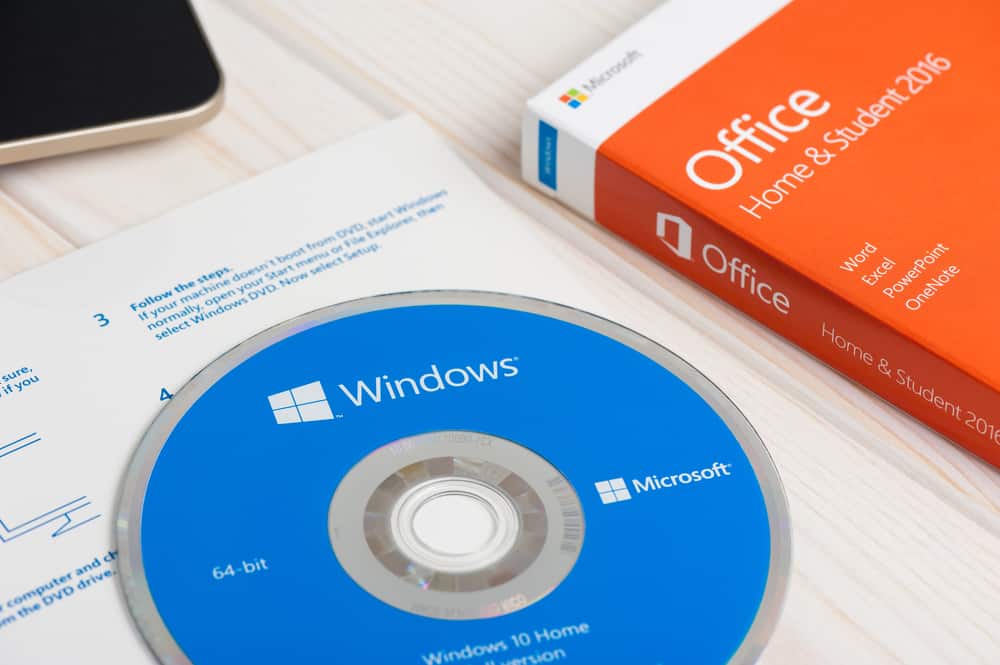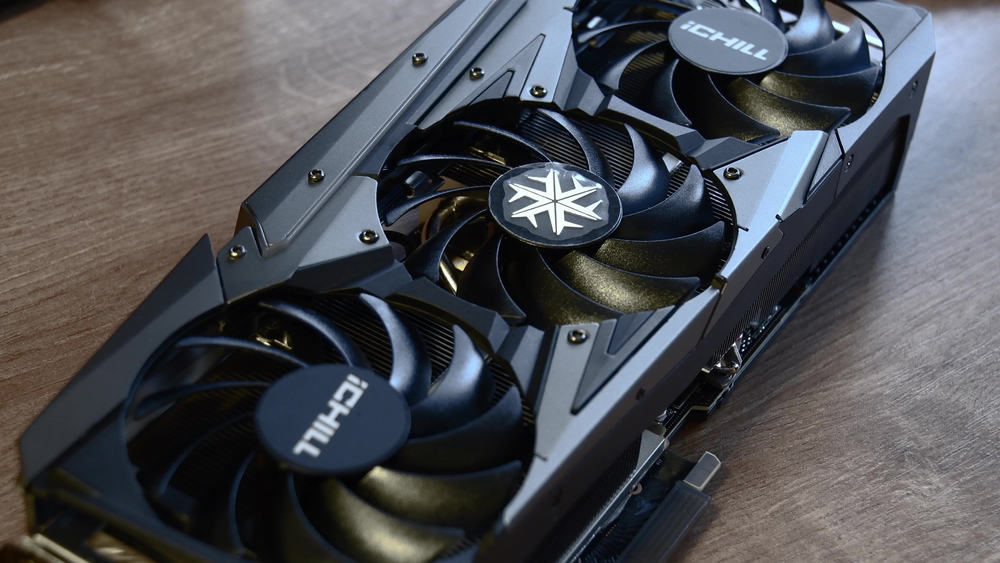
If you’re in the market for a gaming rig, you must have seen the overwhelmingly large selection of hardware and software.
To make things worse, some salespeople may encourage you to go for a workstation to get better performance.
Plus, workstations sound “Pro,” and you may be willing to give them a try.
Are PCs similar, or are they designed for different purposes?
Workstation Vs. Gaming PC (Differences)

A workstation is a powerful computer designed for mission-critical jobs like video editing, 3-D design, CAD, data science, or data-heavy engineering work.
When you look at a workstation, it’s no different from a regular PC, consisting of a monitor, a tower, a mouse, and a keyboard.
You can even see a workstation laptop if its config allows for the heavy workload.
However, the demanding purposes require different components and specs from a regular PC.
Since they’re designed for high-demand computing jobs, workstation components should be more durable to stand the heavy workload.
These computers should be tough enough to run non-stop for hours and days and under full load to perform resource-intensive tasks.
In addition to featuring durable materials, they undergo military-grade testing to ensure they can handle the demanding workloads.
The manufacturer may choose to expose the components to high temperatures, humidity levels, vibrations, and physical stress to test their strength.
These specs don’t stop here.
Workstations are highly customizable and expandable, allowing users to add to the computer’s processing power, memory, or graphical power by adding higher-end components that the entire rig can support.
As a result, the price will also go up due to the enhanced features.
A gaming PC is clearly more powerful than a general-purpose computer because it requires more power for gaming.
However, it may not be as powerful as a workstation due to the different purposes.
Here are the main differences between the two PCs:
1. CPU

Although a gaming PC requires considerable processing power, it’s not as big as what you need for a workstation.
While a workstation processor can have up to 64 cores and a minimum of 16 cores, this is definitely overkill for a gaming PC.
Most gaming PCs feature 4- to 6-core processors because they get the job done.
Even if you have a high-end CPU with more than six cores, you may not be able to take full advantage of that.
The reason is that most game developers design games that can utilize up to 6 cores to cater to a broader audience.
The same limitation applies to the workstation.
If your programs don’t support this configuration, you can’t take full advantage of all those cores.
Depending on your purposes, you may be fine with a Core i7 Intel processor for your workstation.
As a result, an entry-level gaming PC can have a CPU with three cores and upgrade to a high-end 9-core processor.
In contrast, an entry-level workstation can start with seven cores and upgrade to a beast like Intel Xeon W-3365 with 32 cores and 64 threads.
It features 64 lanes of PCIe, with 1.5 MB of L3 cache per core.
This number of PCIe slots means you can connect more GPUs and SSDs, making the motherboard scalable.
On the other hand, the number of cores may not be an essential factor in a gaming PC.
What’s more important is the ability to overclock.
An Intel Core i7 may be a great entry-level CPU for a workstation but a high-end processor for a gaming PC.
That said, you may decide to future-proof your gaming rig and go for a 9-core processor, meaning you may not use its full potential until the new higher-end games come along.
2. Operating System

As mentioned before, a workstation can use a single-user operating system or one specifically designed for businesses and workstations, such as Windows Pro Workstation.
It depends on the number of users, their connection to a LAN, and their requirements.
However, a gaming PC doesn’t need an operating system for businesses as the Windows 10 Home is the best OS for gaming.
Even if you have a Mac, you can install a Windows OS on your device using Boot Camp and enjoy all the benefits offered by this OS.
3. GPU

While a gaming PC can take your gaming experience to a higher level, you can play many titles on a regular PC.
You only need a gaming PC to play AAA games to enjoy them to the fullest.
As a result, the graphics card is arguably the most important component for a high-end gaming PC.
If you play AAA games, you need a GPU that allows ray tracing, high frame rates, 4k resolution, and multiple displays.
However, a high-end graphics card in a workstation only depends on the purpose.
You’ll need a powerful GPU if you want a workstation for content creation, video editing, or 3D rendering.
A high-end GPU will be overkill for other purposes, such as software development and simulation.
In such cases, a powerful CPU will be more necessary.
If your workstation requires a high-end graphics card, you may want to look for something more powerful than what Nvidia and AMD consumer GPUs offer.
Workstation GPUs require higher-capacity VRAM and clock speeds.
Here are some other features that a workstation GPU requires:
A. ISV Certification
Gaming GPUs are optimized for AAA games, while workstation GPUs should be optimized for GPU-intensive programs.
As a result, pro GPUs, like Nvidia’s Quadro or Radeon Pro, have ISV (Independent Software Vendor) certification.
These professional cards get these certificates to guarantee that they’re optimized to work with certain software, such as Autodesk, Dassault, OpenGL, or Adobe.
Consumer graphics cards may be optimized for different software or API, making them less stable in running pro software.
That said, the choice of GPU for a workstation also depends on the application.
For example, if you use your workstation for video editing or 3D rendering, you’ll be fine using consumer graphics cards, which cost much less.
B. Reliability And Performance
If your gaming PC’s graphics card isn’t reliable due to overclocking, you may lose your game progress if it crashes.
Nothing serious, as you can relaunch the game and start over.
However, stability is more important than performance in workstations since a crash can lead to the loss of data that has taken days to render.
That’s why professional workstation users have to pay the high price of Pro graphics cards to ensure maximum reliability and not necessarily performance.
They feature larger memories with ECC capability to handle heavy workloads and ensure reliability.
However, it doesn’t mean that workstation GPUs have lower performance.
They have features like virtualization that allow users to work remotely and access the workstation resources with the same quality as the physical ones.
C. Support
The need for maximum reliability leads manufacturers, namely Nvidia and AMD, to take over all the manufacturing processes for pro graphics cards.
Consumer graphics cards can be produced by board partners, such as Gigabyte or MSI, taking the referenced design and adding their own components.
These board partners handle support for hardware but not the software and drivers.
As a result, consumer graphics card owners may run into trouble getting the right support.
However, workstation-grade graphics cards don’t have these issues since Nvidia and AMD don’t permit their board partners to manufacture them.
This tighter control means higher quality, more professional features, better performance, and lower power consumption.
In addition, they handle all the hardware and software support, offering users a seamless experience.
Pro customers can get exclusive customer support, meaning they don’t need to wait in lines to solve their issues, unlike general users.
D. Memory
Gaming PCs can be versatile devices that you can use to perform many other tasks, such as watching videos, browsing, listening to music, and pretty much everything you perform on a regular PC.
As a result, you need a large memory capacity to avoid crashes and ensure high performance.
However, this amount of RAM is nowhere near what your need for a workstation.
Even if you multitask on your gaming rig, you won’t need more than 16 GB of RAM.
A better choice to future-proof your rig would be 32 GB.
However, a workstation requires much more than that, up to 256 GB, starting with 32 GB.
In addition, you don’t need ECC RAM for your gaming PC because corruption in the consumer software doesn’t affect your workflow as it does on a workstation.
E. Hardware And Looks
In addition to industrial-grade materials used in building workstation hardware, the components can vary greatly between the two rigs.
Since workstations use different CPUs, GPUs, and RAM sticks, they may need different motherboards to accommodate them.
These motherboards may be equipped with different sockets to accept these components and have several sockets for the same component.
It’s not uncommon for a workstation to have dual CPUs or more than one GPU.
As a result, they come with several PCIe and RAM slots to make them upgradeable.
However, gaming PCs and workstations come close in one regard.
Since both are equipped with resource-intensive components, they need the right cooling solutions.
Gaming PCs and workstations work under full load, generating considerable heat, affecting their performance if not managed properly.
These cooling solutions may affect their aesthetic design, which is more important in gaming PCs.
A workstation user may not care about looks as much as performance.
On the other hand, gaming PCs come with different designs, including RGB lighting and matching peripherals.
Both can also come with multiple displays to allow for better visual control.
F. Sound Quality
Sound is a vital component of any gaming PC, especially with the development of modern AAA games in which sound plays a crucial role.
Sound helps gamers immerse in the gaming experience, and sound cues help them perform better.
The sound is even more important for multiplayer games because it can mean the difference between success and failure.
In shooter games, the sound cues can help you pinpoint your opponents and get an edge over them.
Some games use Virtual Surround sound, allowing you to hear voices from different directions.
You’ll need the right equipment and sound drives to capture these qualities.
However, a workstation doesn’t require a high-end sound device unless sound plays a crucial role in your projects.
You may never need a speaker or headphones in your workstation.
Can A Workstation Be A Gaming PC?

Technically speaking, a gaming PC can be a kind of workstation.
It’s a PC designed specifically for one purpose.
The purpose of a workstation is professional, while a gaming PC is more geared toward entertainment.
Now, you may wonder if you can use your workstation for gaming.
The short answer is yes because of all the added features and boosted performance.
However, everything comes down to optimization.
As mentioned, all the professional-grade hardware used in workstations is optimized for specific purposes.
The same goes for a gaming PC, where the GPU is optimized for modern gaming.
As a result, you may not get your desired performance with a workstation if it’s optimized for CAD, for instance.
In addition, your workstation may be a beast for a specific purpose but doesn’t have a graphics card suitable for gaming.
And since a graphics card is the most crucial component for gaming, you may not get a good gaming experience with a workstation.
Gaming PCs have a higher cost-to-performance ratio than workstations because their components are less expensive and high-performance.
As a result, playing games on a workstation may leave you wondering why it’s loud, bulky, and giving sub-par gaming performance.
NEXT: Can You Log In To Snapchat On A Computer? (2023 Updated)

























